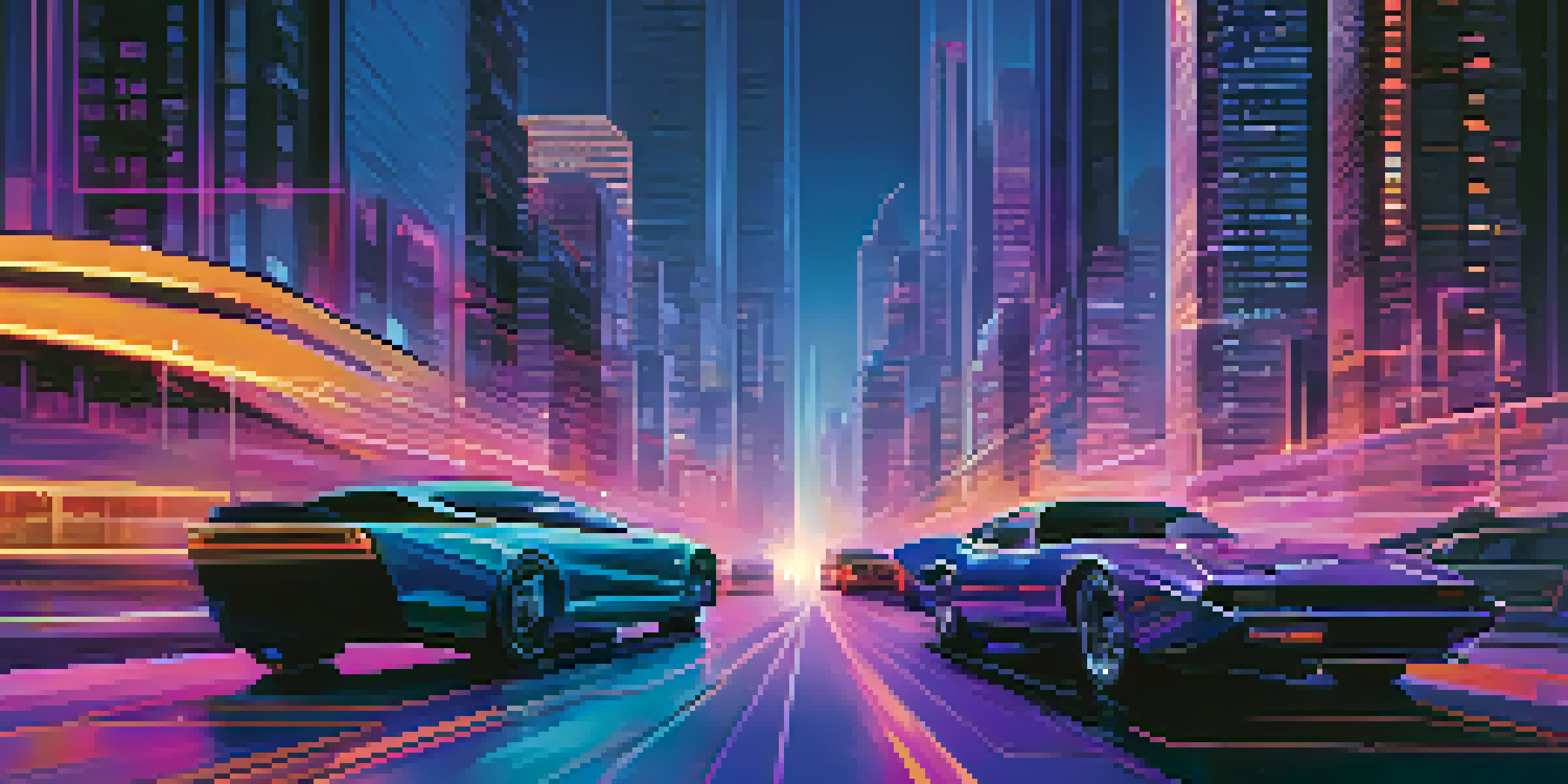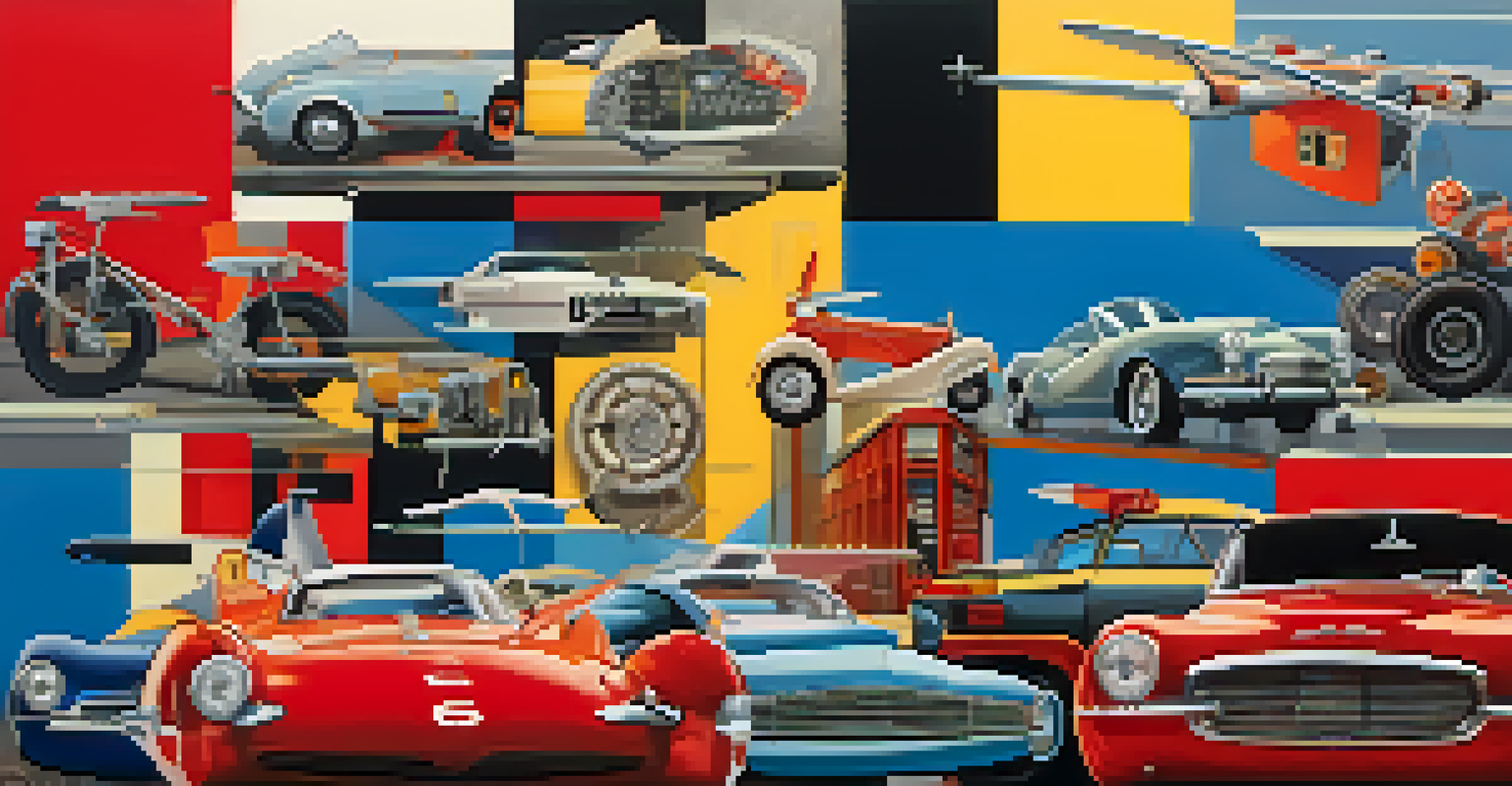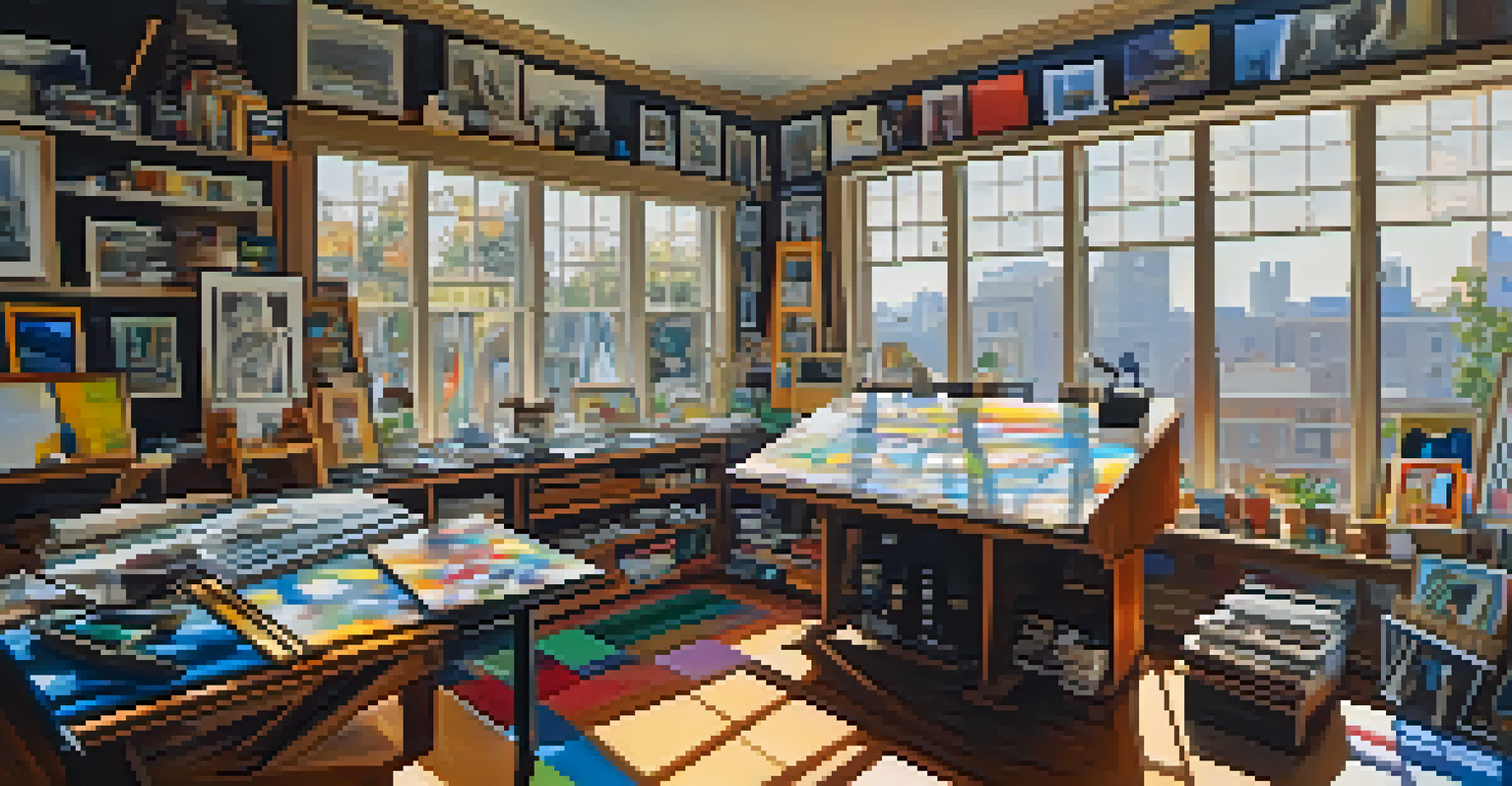Futurism: Embracing Speed and Technology in Early 20th Century

The Birth of Futurism: A New Artistic Movement
Futurism emerged in the early 20th century as a radical artistic movement that celebrated modernity. Founded in Italy by poet Filippo Tommaso Marinetti in 1909, it sought to break away from the traditions of the past. Artists wanted to portray not just objects but the dynamic energy of modern life, embracing speed, technology, and change.
The past is a part of our lives, but it is not what defines us. We are defined by our future, by what we make of what we have been given.
The movement gained momentum with its manifesto, which boldly proclaimed a rejection of historical art and a commitment to the beauty of machinery. Futurists believed that art should reflect the speed and violence of contemporary society, mirroring the rapid advancements in technology. This manifesto laid the groundwork for a new approach to art that was both innovative and provocative.
As Futurism spread, it attracted artists, sculptors, and architects who sought to capture the essence of movement and progress. By experimenting with forms, colors, and techniques, they aimed to depict the frenetic energy of the modern world. In doing so, they not only transformed art but also challenged societal norms about what art could be.
Celebrating Speed: The Heart of Futurism
At the core of Futurism was an obsession with speed, a reflection of the rapidly changing world. Artists portrayed vehicles, trains, and urban landscapes in a way that emphasized their motion and impact. By using techniques like dynamic lines and vibrant colors, they created a sense of urgency that pulled viewers into the artwork.

This celebration of speed wasn't just about aesthetics; it resonated with the cultural zeitgeist of the time. The early 20th century was marked by technological advancements that transformed daily life. Futurists harnessed this excitement, believing that embracing speed could lead to a brighter, more modern future.
Futurism Celebrates Modernity
Futurism emerged in the early 20th century, embracing speed, technology, and the dynamic energy of modern life.
By depicting speed, Futurist artists also explored the idea of modern identity. They questioned what it meant to be human in an age of machines and how technology could enhance life. This exploration of identity resonated with many, making Futurism a significant influence on the broader cultural landscape.
The Role of Technology in Futurism
Futurists viewed technology as a driving force for change, fundamentally altering how people lived and interacted. They celebrated inventions like the automobile and airplane, seeing them as symbols of progress and freedom. This enthusiasm for technology permeated their artworks, which often depicted machines as heroic figures.
Art, to be modern, must be revolutionary.
The integration of technology into art allowed Futurists to push boundaries and challenge conventional practices. They experimented with new materials and techniques, reflecting the innovations of their time. For instance, the use of collage and mixed media became commonplace, showcasing technology's influence on artistic expression.
Moreover, Futurism's fascination with technology extended beyond just aesthetics; it was a call to action. The movement encouraged society to embrace the future and reject the stagnation of the past. By promoting technological advancement, Futurists sought to inspire a collective mindset focused on progress and innovation.
Futurist Literature: A New Wave of Expression
Futurism wasn't limited to visual arts; it also made significant strides in literature. Writers like Marinetti and his contemporaries used language to evoke the same sense of speed and modernity found in visual art. Their poetry and manifestos were filled with vivid imagery and rhythm, creating an immersive experience for readers.
In their literary works, Futurists often experimented with form and structure, breaking traditional rules of grammar and punctuation. This approach mirrored their artistic endeavors, emphasizing spontaneity and the chaotic nature of modern life. By pushing literary boundaries, they sought to reflect the dynamic world around them.
Symbiotic Arts: Visual and Literary
The interplay between Futurist visual arts and literature enriched the movement, creating a cohesive narrative that inspired a cultural revolution.
Through their writing, Futurists aimed to inspire a cultural revolution. They believed that literature could ignite the same passion for progress that visual art did, encouraging people to embrace the future. This fusion of art and literature created a holistic movement that resonated deeply with audiences.
Futurism and the Visual Arts: A Symbiotic Relationship
The visual arts and literature in the Futurist movement fostered a symbiotic relationship, each influencing the other. Artists found inspiration in the bold language of Futurist literature, while writers drew on the visual dynamism present in the artwork. This interplay enriched the movement, making it a multifaceted expression of modernity.
For example, the use of vivid, kinetic imagery in paintings often reflected the frenetic energy described in Futurist poetry. Artists like Umberto Boccioni and Giacomo Balla created works that encapsulated the essence of speed and movement, reinforcing the ideals promoted in Futurist literature. This mutual reinforcement created a cohesive narrative that captivated audiences.
As this relationship evolved, it helped solidify Futurism as a major cultural force in the early 20th century. By bridging the gap between visual and literary arts, the movement expanded its reach and impact. This collaboration encouraged a collective embrace of modernity, inspiring generations of artists and writers to come.
Futurism's Influence on Architecture
Futurism's impact extended into architecture, where it inspired a bold new vision for urban spaces. Architects like Antonio Sant'Elia envisioned futuristic cities characterized by sleek lines, innovative materials, and a harmonious relationship with technology. They believed architecture should reflect the dynamic nature of modern life and embrace the advancements of the time.
This architectural vision emphasized functionality and efficiency, aiming to create buildings that were not just aesthetically pleasing but also practical. The use of glass, steel, and concrete marked a departure from traditional materials, allowing for new forms that echoed the movement's ideals. These designs represented a forward-thinking approach that aligned with the Futurist philosophy.
Architecture Reflects Futurist Ideals
Futurist architecture aimed to embody the principles of modernity and technology, resulting in innovative urban designs that integrated art into everyday life.
Moreover, Futurist architecture sought to break the barriers between art and everyday life. By integrating art into public spaces, architects aimed to create environments that inspired and energized the community. This integration fostered a sense of belonging and connection to the modern world, leaving a lasting legacy in urban design.
The Decline of Futurism and Its Legacy
As the years progressed, the Futurist movement began to wane, facing criticism and challenges. The onset of World War I brought a harsh reality that contradicted the movement's glorification of war and technology. Many Futurists struggled to reconcile their ideals with the grim realities of conflict, leading to a decline in the movement's popularity.
Despite its decline, Futurism left an indelible mark on the art world and beyond. Its emphasis on speed and technology paved the way for later movements like Constructivism and Surrealism. The ideas and innovations born from Futurism continued to influence artists, writers, and thinkers for decades to come.

Today, the legacy of Futurism can be seen in modern art, architecture, and even design. The movement challenged conventions and encouraged a spirit of experimentation that resonates in contemporary creative practices. By embracing the future, Futurism laid the groundwork for ongoing discussions about the relationship between art, technology, and society.